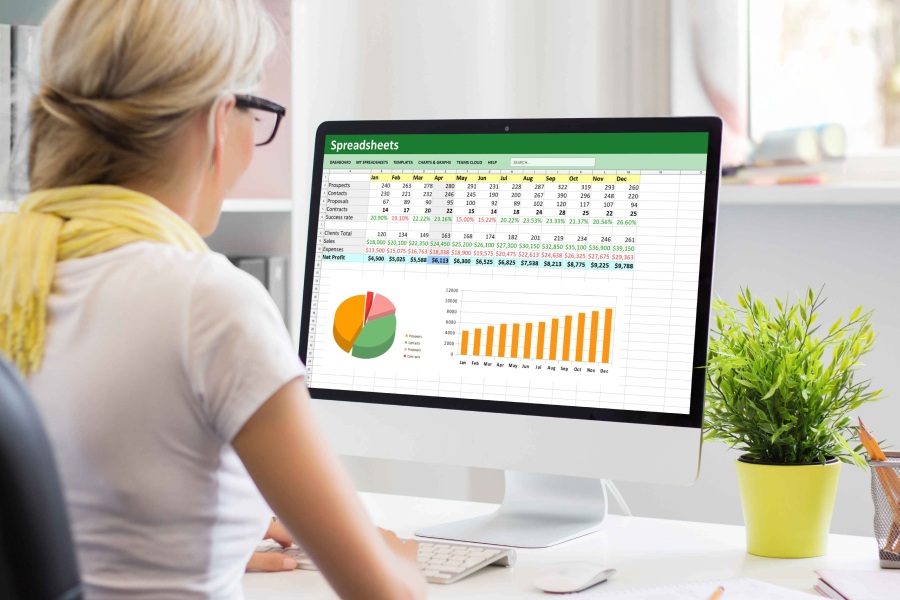Efficient claims management plays an important role in every vehicle fleet , because damage can occur at any time. The costs of company cars can quickly skyrocket. Smooth claims management that simplifies internal communication processes and ensures employee mobility is therefore essential. But how do fleet managers ensure efficient handling of damage in the fleet? And what steps are necessary in this case? We tell you which tasks are part of claims management and how you should proceed in the event of a claim.
Contents
What does fleet claims management mean?
Effective claims management is an important area of fleet management. It encompasses all processes and strategies that are used to handle damage to a company’s or organization’s vehicles. If an accident or vehicle damage occurs in the fleet, a quick response is required. Failure to do so may result in significant disruptions to mobility and operations. This can lead to delays in order processing, restrictions on operational capacity and additional costs for replacement vehicles or repairs.
Efficient claims management helps to keep costs as low as possible and minimize downtimes. Damage prevention is also an important aspect of this in order to reduce the risk of accidents and vehicle defects in advance. This includes processes such as regular maintenance, comprehensive driver training, driving license checks and driver safety training. When purchasing new company vehicles, you should also make sure that the vehicles are up to date in all technical and safety-related aspects.

Claims management with Fleet+
Our Fleet+ fleet software digitalizes and simplifies claims management: collect all images, expert reports and invoices in a digital claims file and analyse the main points of damage. Drivers can report damage directly via the web application.
Claims management process: The most important tasks for fleet managers
If, despite all precautionary measures, an accident or damage occurs in the fleet, quick and structured action is required. Effective claims management as part of fleet management helps to minimize downtimes and control costs. The following steps should be observed:
Step 1 - Immediate measures after an accident
After an accident or vehicle damage, the safety of everyone involved is paramount. The scene of the accident must be secured to prevent secondary accidents. If necessary, the police and emergency services should be notified immediately. The incident must then be documented in detail with a damage report: An accident report with all relevant details is essential for reporting. This includes photos of the damage, a record of the accident site and the contact details of all parties involved and possible witnesses.
Step 2 - Notification of damage to the insurance company
As soon as the immediate measures have been completed, the damage must be officially reported. This is done both internally and with the insurance company. Complete documentation is crucial in claims processing in order to ensure that the process runs smoothly. In addition to the accident report, all relevant documents such as photos, witness statements or expert reports should be included. A thorough review of the damage also helps to realistically assess the need for repairs and find cost-efficient solutions.
Step 3 - Organizing the repair
In order to minimize vehicle downtime and ensure mobility, the fleet manager needs to carry out repairs quickly and efficiently. A suitable workshop or partner company must be commissioned for this purpose. If the damaged vehicle is essential for the business, a replacement vehicle should also be organized. Pool vehicles can also be used for this purpose to ensure that all employees remain mobile. During the repair phase, it is important to monitor progress regularly and ensure that the repair is completed quickly.

Step 4 - Damage evaluation and reporting
Effective vehicle claims management requires close coordination with the insurance company in order to expedite claims settlement as quickly as possible. In addition, relevant internal departments must be informed about the incident, especially if the damage has an impact on operational processes. Transparent communication with the affected drivers and, if applicable, customers also helps to avoid uncertainty and maintain trust.
Step 5 - Analysis and optimization of claims management
After the claim has been settled, the incident should be thoroughly analyzed. Important questions are: What was the cause of the damage? Was it human error or external influences? Based on these findings, preventative measures can be taken, such as driver training or the use of technical assistance systems. It is also worth regularly reviewing cost trends and identifying optimization potential in claims management. In this way, vehicle defects can be averted as far as possible in the future. Fleet management software can support you in analyzing your fleet.
Claims management starts with prevention
Efficient claims management starts with preventing accidents and damage to the vehicle fleet. This includes regular UVV driver training. Drivers are trained in the safe handling of company vehicles and how to behave correctly in the event of an accident. It is extremely important to document all training courses carried out, as there may be severe penalties in the event of a claim if the training was not carried out or not documented.
The operational safety of the vehicles should also be ensured as part of claims management. Regular servicing and maintenance measures, as well as the UVV vehicle inspection, help to prevent damage and ensure road safety. Software can remind drivers of important dates and thus enable the digitalization of claims management. In addition, checking driving licenses is an important measure to improve the safety of all road users and prevent accidents.

Safe on the road: Driver training in accordance with UVV
Carano’s e-learning course trains drivers in the safe use of company vehicles. All results are fully documented and serve as proof in the event of a claim.
Digital claims management: software supports fleet managers
Digitalization helps fleet managers to make communication processes more efficient and thus save time and costs in the long term.Digital solutions can help speed up processing times and keep costs as low as possible, particularly in the area ofclaims management. In addition, fleet software offers the option of collecting all relevant documents relating to the damage, such as images, repair approvals or expert reports, centrally in a digital damage file.
Comprehensive reporting is costly and a decisive cost factor, especially in the management of large fleets. Software solutions that automatically keep an eye on vehicle costs, evaluate damage or remind you of safety-related deadlines such as the UVV driver training or driving license check offer a lot of savings potential in the long term.
Fleet management software supports you with the following functions:
- Claims file incl. Pictures, expert opinions and other documents
- Analysis of key damage areas
- Automated communication with the insurance company
- Monitoring of claims settlement
- Decentralized online claims reporting by drivers
What are the advantages of outsourcing claims management?
In many fleets, service providers take care of claims handling, saving fleet managers a lot of time. But here, too, it is important to consider outsourcing carefully, as the choice on the market is diverse. This checklist can help you select an external service provider:
- Service hours and service hotlines
- Help with damage abroad
- Service packages, e.g. communication with workshop, fast procurement of a replacement car
- Reporting options
- How much time does the fleet manager still have to invest?
Whether a leasing provider, a fleet company or a car insurance company handles the claims settlement is ultimately always a matter of discretion. It is important to carefully examine internal capacities before outsourcing claims management.
Small fleets in particular, in which not every position can be filled by a specialist, benefit from outsourcing and can devote themselves better to other fleet-related topics thanks to the reduced workload. Particularly when it comes to legal expertise, fleet managers should not be afraid to call in an expert service provider to handle the claim, in order to be able to assess and minimize possible later legal costs ahead of time.

Digital support for loss prevention with Fleet+
Keep an eye on all inspection dates with Fleet+ fleet management software and support fleet safety digitally.
Conclusion
- Effective fleet claims management is crucial to minimizing downtime, reducing costs and maintaining smooth operations.
- Preventive measures such as regular maintenance, training and the use of modern technologies can significantly reduce the risk of damage.
- Digitalization and software support offer fleet managers a valuable opportunity to reduce administrative work and focus on strategic tasks.
FAQ - Claims management
Damage management in the fleet includes all organizational and operational measures for recording, processing and avoiding defects in company vehicles. This includes the structured recording of damage, the efficient coordination of repairs, processing with insurance companies and the optimization of internal processes. The aim is to minimize downtimes, reduce costs and ensure operational mobility.
Professional claims management makes a significant contribution to the economic and operational efficiency of a company. Inadequately regulated processes lead to longer downtimes, increased administrative work and rising costs. Clear processes and fast processing can reduce financial burdens, effectively manage insurance claims and establish preventive measures to avoid damage in the long term.
Quick damage assessment, the selection of cost-efficient repair partners and preventive measures such as driver training or assistance systems help to reduce costs. The use of software can optimize claims management processes and thus save costs.
More articles on claims management and vehicle fleets
Fleet management tasks: The 10 most important fleet activities
10 tips for efficient and successful fleet management
Fleet analysis: Analyzing the fleet step by step
Car Policy: Significance and advantages of a company car policy in the vehicle fleet
The fleet manager as a key role in the company
Fuel cards for companies: Efficient management of fuel costs in the fleet
Sustainable Fleet: Measures for more Environmental and Climate Protection in the Fleet
Corporate car sharing: advantages for companies, fleets and drivers






